Firstly tell us about how you came to photography?
Chris Round (CR): My main artistic interests when I was younger was painting but I became increasingly impatient and wanted more ‘instant results’. I began to take a keen interest in photography while travelling (I travelled around Australia in the mid 90’s). When I look through those shots some still hold a certain aesthetic value today, though some art quite cheesy if I’m honest! This interest developed further and I ended up studying at Sydney College of The Arts. I always wanted to take a 'fine art’ approach to my work though and this required me working as a creative in Advertising to help pay the bills, so to speak. Having eased off the advertising side of things these past couple of years have become my most prolific, photography-wise.
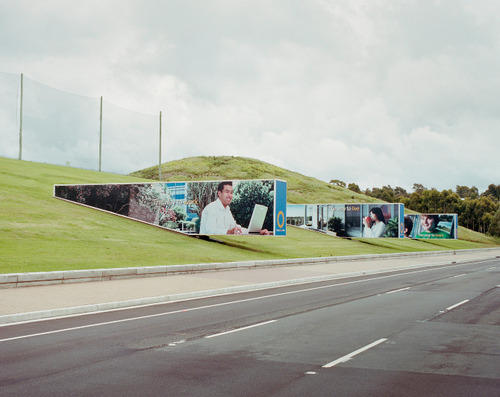
© Chris Round from the series 'In Two Places'
What kind of research are developing today and how this is linked to your past?
CR: My research of late continues down two main areas. Firstly I am always observing the surreal relationship humans have with their surroundings. Subject matter can be from local scenes in my neighbourhood to scenes more further afield in Australia or overseas. This strand of research has also evolved in to analysis of our relationship with nature, not so much from an environmental perspective but from a study of the definition. With my recent exhibition 'Evidence’ I was discussing with the curator (Sandy Edwards) about a hard-line definition of nature expanding to include almost everything that we humans create. We are after all natural beings and have been manipulating our surroundings for millennia, as do many animals. It is in our nature to do so. What is natural then? Is a mining pit natural? Is a playground natural? I can’t possibly answer this, and don’t adhere to this train of thought, but it’s something I enjoy theorising about (without condoning some of man’s ways). As well as going out and finding new places to document I am interested in constructing my own subject matter both in the field and perhaps in a studio environment - bringing the outside indoors. Hopefully this is something I can begin to work this year. I have a feeling this may evolve in to a whole new strand of thinking, but will take time.
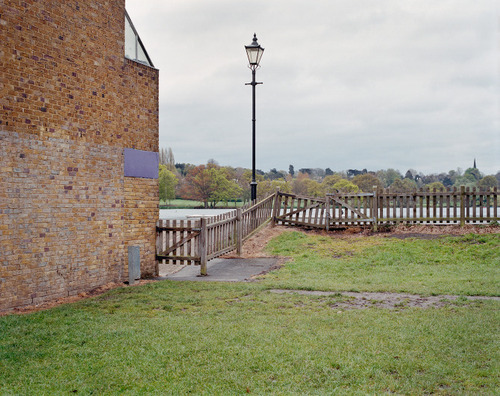
© Chris Round from the series 'Comfortable Displacement', 2013
I can see a link to my past for some of my images for sure. Living in the Midlands (in the UK) as a boy I remember painting a landscape that included a power station along the River Trent - at once a pretty scene with trees, fields and animals, but with the footprint of man there for all to see. It’s a scene I should go back and shoot. I was also fascinated, at that time, with the work of John Constable. His English landscapes seemed to me to be the documentary images of their time portraying the landscape as it was, not an imaginary place. This quite different from the Romantic school he is associated with. Perhaps subconsciously this early interest has remained with me.
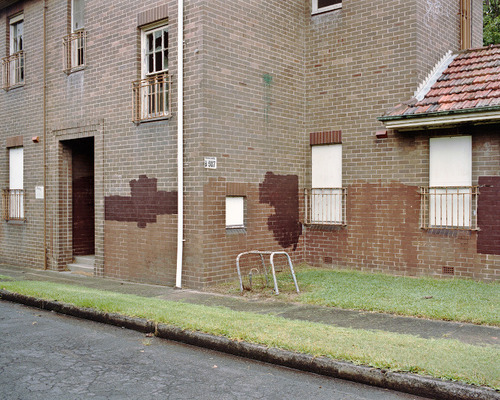
© Chris Round from the series 'Comfortable Displacement', 2013
The other, ongoing and ever-evolving strand of research is my dual British and Australian nationality. These are places that are culturally very similar, yet geographically very different. Having spent a similar time in each country I find myself being both a local and a foreigner in each country. This is covered in my series 'Comfortable Displacement’ which we will discuss later.
There are many recognizable references in your work. Tell us what are your major influences and what photographers you particularly enjoy. Besides photography what are the artists, books, works of art that impressed you the most?
CR: There are a number of influences I have had over the years. They can arise from a simply observation in the street, from reading books, and more artistic and obvious influences. Photographically I remember seeing Joel Sternfeld’s photograph ‘Mclean, Virginia’ when I was young and have admired his work ever since. In the list of photographic influences photography influences are also Jeff Wall, Joel Mayerwitz, Andreas Gursky, Stephen Shore and William Eggleston, Robert Frank, Edward Burtynsky, Thomas Struth, Geert Glorisand, Frank Breuer, I could go on and on.
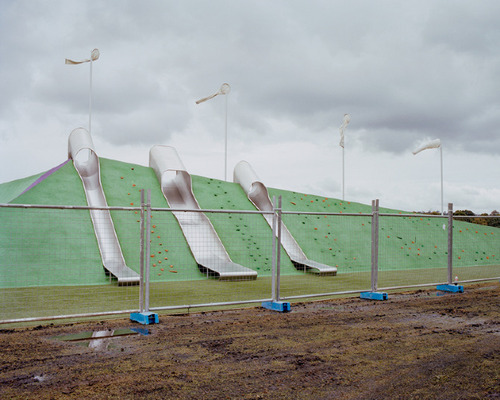
© Chris Round from the series 'Evidence', 2012
Some of my favourite works of art include the paintings of Constable and Turner through to the likes of the abstract expressionists Robert Motherwell, Barnett Newman and Franz Kline. I love the engagement and challenging nature of more contemporary and conceptual art of people like Damien Hirst, Rachel Whiteread and Thomas Locher to name a few. I also think my career in advertising has influenced my thinking - I have always believed in communicating with great ideas (where possible!!) and I think this filters through in to the way I structure my work.
Some of your series are works in progress, to which you add new images regularly. We really like this open attitude. Let’s talk for example of the series 'Comfortable Displacement’ that deals with the emotional bond between the individual and a place. Years ago, in an interview, I wrote that landscape photography, while maintaining geographic representation, is moving towards an introspective dimension, almost psychological. In this way you can also tie together different countries as you did. Did you find the meaning of identity? Tell us about this project, the difficulties you encountered and its prospects.
CR: This project has helped me answer some of the questions that arose when I asked myself “why am I drawn to the subjects I photograph?” ie: living in Australia but being drawn to overcast light and somewhat gloomy conditions (maybe it’s because I’m by the beach on the nice days!) and photographing the kind of landscapes one might find in any developed country.

© Chris Round from the series 'Evidence', 2012
Not sure I found the meaning of identity yet, but I’m perhaps closer. I love both countries (hence 'comfortable displacement’) but during my questioning I found that I was maybe a little too dismissive of my English heritage, but now I realise it drives a lot of my aesthetic choices when making photographs. There are a difficulties with a project like this. Firstly a practical problem: it requires photographs from both countries and some hefty travel expenses! The main issues though were to do with the subject matter. Did I want to show surroundings I was familiar with in order to convey a bond (or broken bond perhaps)? I thought about this a lot but my thinking was that I didn’t want to be too literal. I concluded that to be true to the idea I needed to be unfamiliar with my surroundings, in essence dramatising the concept and creating fictional representations of displacement. Hopefully this accentuates the feeling of displacement to the viewer.
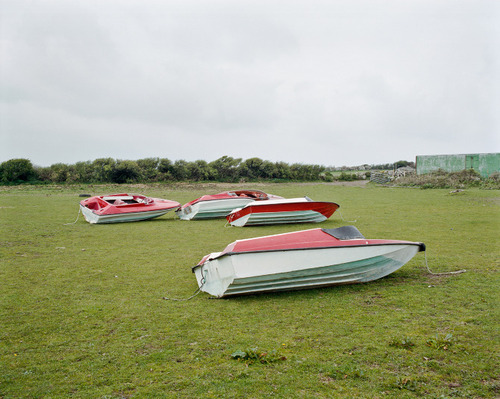
© Chris Round from the series 'Evidence', 2012
I am quite sure that this project will continue for many years, at least subconsciously; I will always have a close association with each country and, so as long as I am creatively active, this background story will most likely influence my work to some degree.
In the series 'Fragile beast’ you put out a recurring theme in the documentary landscape. The fragility of the soil and the environment. All this invites us to reflect on the value of photography in witnessing the transformation of the territories. Do you think from your experience as a photographer that the post-modern society has understood this need to document the time through its signs?
CR: Interesting question Steve. Hey I’m no philosopher but I think that individuals and small groups (artists, writers, photographer, activists etc) understand this need and can use it to powerful effect in post-modern society, but governments and big business don’t (or choose not to). Today, with such an interconnected society, with so many image making tools available to people, modern life (in all it’s forms) is being documented more comprehensively than ever by individuals across the globe and this continual scrutiny is hard to avoid.
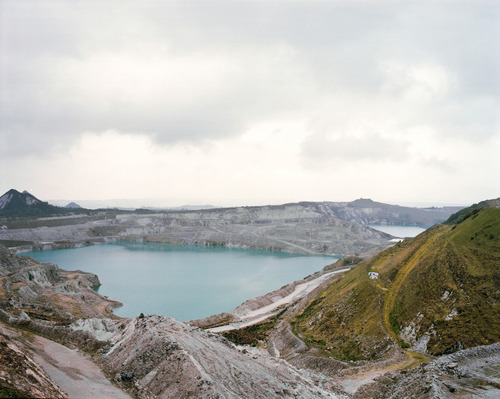
© Chris Round from the series 'Fragile Beast', 2013
Perhaps this documentation has also become more diverse and fragmented, replicating the post-modern, globalised society - from introspective, self-conscious documentation to broader themed documentation like environmental and societal issues. From my perspective the process of documenting through photography is still hugely important and will continue to be - even if the subject matter is a chair that was sitting by the side of a road one day (and is gone the next) to a pristine environment that is gradually quarried for its resources. Perhaps now though, more than ever it’s imperative that we record and document because the rate of change is increasing exponentially, in all walks of life from innovation in technology to transformation of the environment.
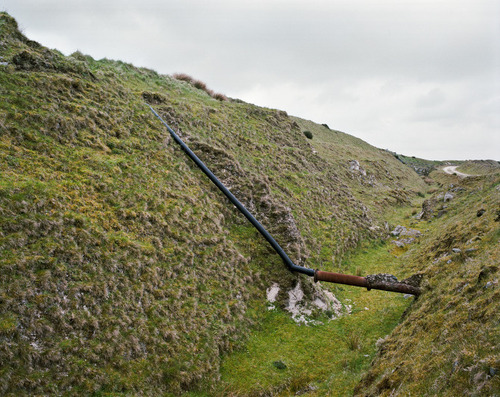
© Chris Round from the series 'Fragile Beast', 2013
What interested me in the Cornish China Clay mines, though, was also that the area was once so economically vibrant simply because of what was found lying under the soil, much like the boom we’re experiencing in Australia at the moment. The Cornish mines have now been hit by global competition from developing nations offering cheaper ore prices, cheaper labour prices.
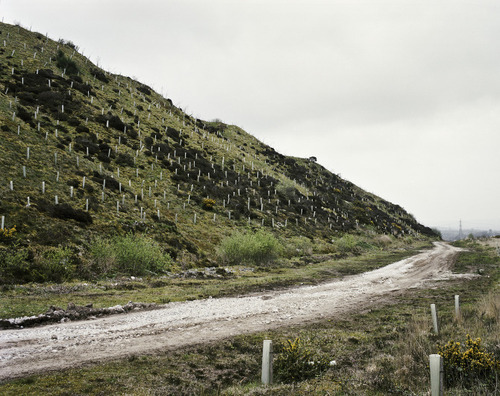
© Chris Round from the series 'Fragile Beast', 2013
This has left the landscape and also the community (now with high unemployment levels) scarred for life. I wonder if this is prescient as we are already seeing Australian mining companies struggle to compete with cheaper labour costs from other nations. History repeats so I wonder if photographers will be telling stories about the demise of mining in Australia, in Brazil, China etc in 50 years time when the world either runs out of demand, or supply (or both).
Landscape photography by definition owes much to painting. With the project '21st century settler’ you inspire a dialogue with painting. Today we observe instead that the painting is taking a lot from photography, thinking of hyper realism. What is your relationship with the arts in general and the history of art. And how was created and developed the idea for this project?
CR: I mentioned earlier my interest in Constable - I was always very interested in art when I was young and painted but was always frustrated with the time it took, hence my interest in photography (not an un-common reason to switch I believe!). However I also had a keen interest in modern art and my tastes and my reading clearly followed a chronology from The Renaissance to Constable and Turner, then Fauvism, Cubsim, then Abstract Expressionism and through to conceptual art and the contemporary art of the past 20 years or so. I love experiencing great new ideas and so my main interests today generally lie in what’s happening 'now’.
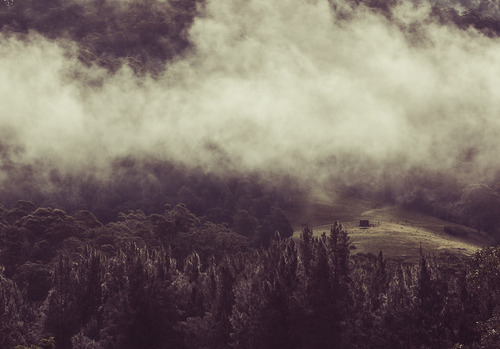
© Chris Round from the series '21st century settler', 2012
The idea for 21st Century Settler came during a visit to the Kangaroo Valley (country NSW, Australia) in the winter of 2011. It was a damp and misty weekend and the scenes reminded me very much of some of the paintings made by early Australian artists - of their surroundings and of settlers making a new life for themselves. Of course with my English background the overcast and damp weather was conducive to me taking pictures! I began to ask: how would some of these painters tackle this scenery today, and with a camera? The scenery reminded me most of the ones Frederick Mccubbin painted and some his most famous works like Down On His Luck, Lost , Bush Burial and The Pioneer were tonal and processing reference points for me. It’s also interesting for me consider this idea in the context of my later series 'Comfortable Displacement’ - many of McCubbin’s paintings deal with the emotional difficulties of settling in a new country in the 1800’s. Perhaps it could be seen as a precursor, though my life is far easier than theirs ever was!
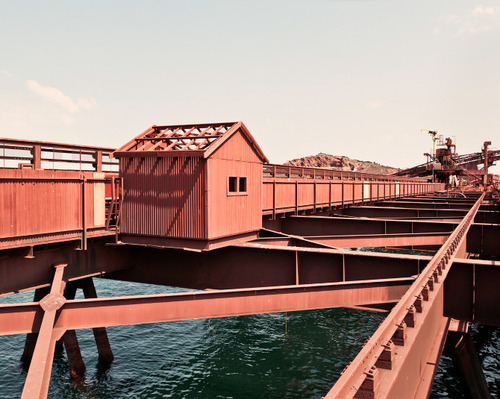
© Chris Round from the series 'Whyalla', 2013
Plans for the future?
CR: This year my show 'Evidence’ will be travelling to Melbourne to be shown at at Edmund Pearce Gallery, a great gallery dedicated to showcasing contemporary photography. I have also been invited to participate in the Ballarat International Foto Biennale and I am also trying to organise a couple of group shows. I will also keep shooting more ideas and adding to existing ones, and this year I plan to experiment some more both in the field and with some studio based work. I will also enter some more awards (budget permitting) - it’s good to aim for some recognition here and there. Long term plans will evolve, as hopefully my work will, so I will take it year by year but I think my next major long-term step is to really push myself conceptually.
---
Chris Round
share this page